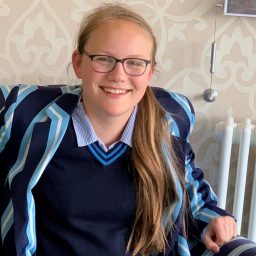by Moa
Taking over the ship probably doesn’t sound as exciting as it is. The idea is that we students use the knowledge we’ve gained so far to navigate, cook, and repair the boat. Everything starts with writing your application. Actually earlier, when the job advertisement is hanging in the messroom and everybody comes running to check the list. Afterwards many people are writing their application. The usual jobs are the positions of captain, first, second, and sometimes third mate, and two people for the direction of the project. Additionally, there are the positions of engineer, bosun and the master of provision. And last but not least there are the four heads of watches and their assistants. Before the application deadline all the students meet to check if every job advertisement has somebody who is trying to apply and if people want to do extra jobs, including journalist and a pâtissière which were special positions we had this time.
And then Monday came, the 02/03/20, the beginning of us students being responsible for the Thor Heyerdahl. The special thing this time was that we were fully navigating with celestial navigation and without the possibility of using GPS. The first afternoon I was working in the galley and didn’t realize the change in situation till my next watch the day after. The main difference in watch was that we took a board log (dutch logging) and weren’t just looking at the GPS for our speed.
The first day we had small waves and not an overly amount of wind but over time the ship movement increased together with the wind. When we were trying to do a board log during the night, the banana that we threw in just disappeared and we needed seven tries until we got a time to calculate with. But these were the problems of the watches. The difficulties of the captain and the mates were quite different: in order to get a position with astronomical navigation you need a sextant, a correct watch, and most importantly a sky where you can either see the sun, moon or stars. Then you shoot the sun which means getting the angle of the sun at a specific time. With using this angle and other numbers from certain books you can calculate your position. If you want to shoot the angle of the stars it is even more difficult.
First you have the ship movement but that’s the same when you shoot the sun, secondly you have to find the star with your sextant. You are probably thinking “Oh that has to be quite easy” but it isn’t. Stars on a sextant are extremely small dots and you have to make sure that the one you are looking at is the right one that fits to the given numbers in the nautical books. After that the calculations start. These calculations take a long time, approximately 2 hours for one position, so our captain Emma and her mates Jasper, Max M. and Finn didn’t get a lot of free time and even less sleep. In fact, you can’t be 100% sure if the position is right as there are many calculations and numbers where you could have made a mistake.
Before we took this huge responsibility we all wrote down an angle and a number of miles we thought we´d be off our actual position and on Wednesday we got the result: We were 7 nautical miles and 169° away from our actual position. That was quite disappointing due to the fact that all the earlier positions were only two to three miles off. The watches got more and more difficult as well. That was a result of increasingly more wind and higher waves plus that we were already less people in the watches and a lot of us got seasick.
But as you can see we are still alive and have happily arrived in Bermuda.

